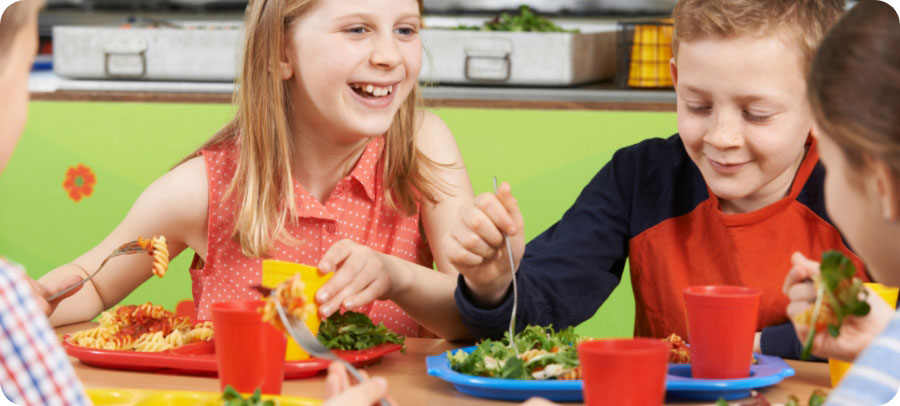What is Eating Competence?
We all want children to grow up eating well, but what does this mean?
Like learning to read, learning to eat a variety of foods is a skill that each child will develop over time and at their own pace. Children are born intuitively knowing how much to eat for energy and to grow well. They learn to accept new foods through many exposures, positive food experiences, and role modelling.
Children’s Eating Patterns
The types and amounts of foods that children eat may change from day to day. This is normal, but it can feel frustrating for school food providers. It can be helpful to view “picky eaters” as “eaters in training”. Over time, we can trust that children will learn to eat a variety of foods. For some children, this pace might seem very slow, requiring more trust and patience.
What is eating competence and why help children develop it?
Instead of focusing on what or how much children eat at any meal, schools can shift their focus on supporting students with developing skills they need to eat well in the long-term (i.e., eating competence). Eating Competence*, a term coined by family therapist and dietitian Ellyn Satter, refers to the ability to be positive, comfortable, and flexible with eating, trusting oneself to eat enough food and enjoy it.
*Eating competence is linked to better health outcomes including improved eating patterns, sleep and self-acceptance, as well as lower risk of cardiovascular disease, and lower frequency of behaviours associated with eating disorders.
What eating competence skills can we support students with?
- Enjoying food and feeling good about eating
- Choosing from foods offered in a relaxed manner
- Participating in school meal and snack routines
- Supporting respectful eating spaces
- Taking interest in new foods and learning to like food (over time)
- Continuing to respond to the body’s cues of hunger, fullness and satisfaction
